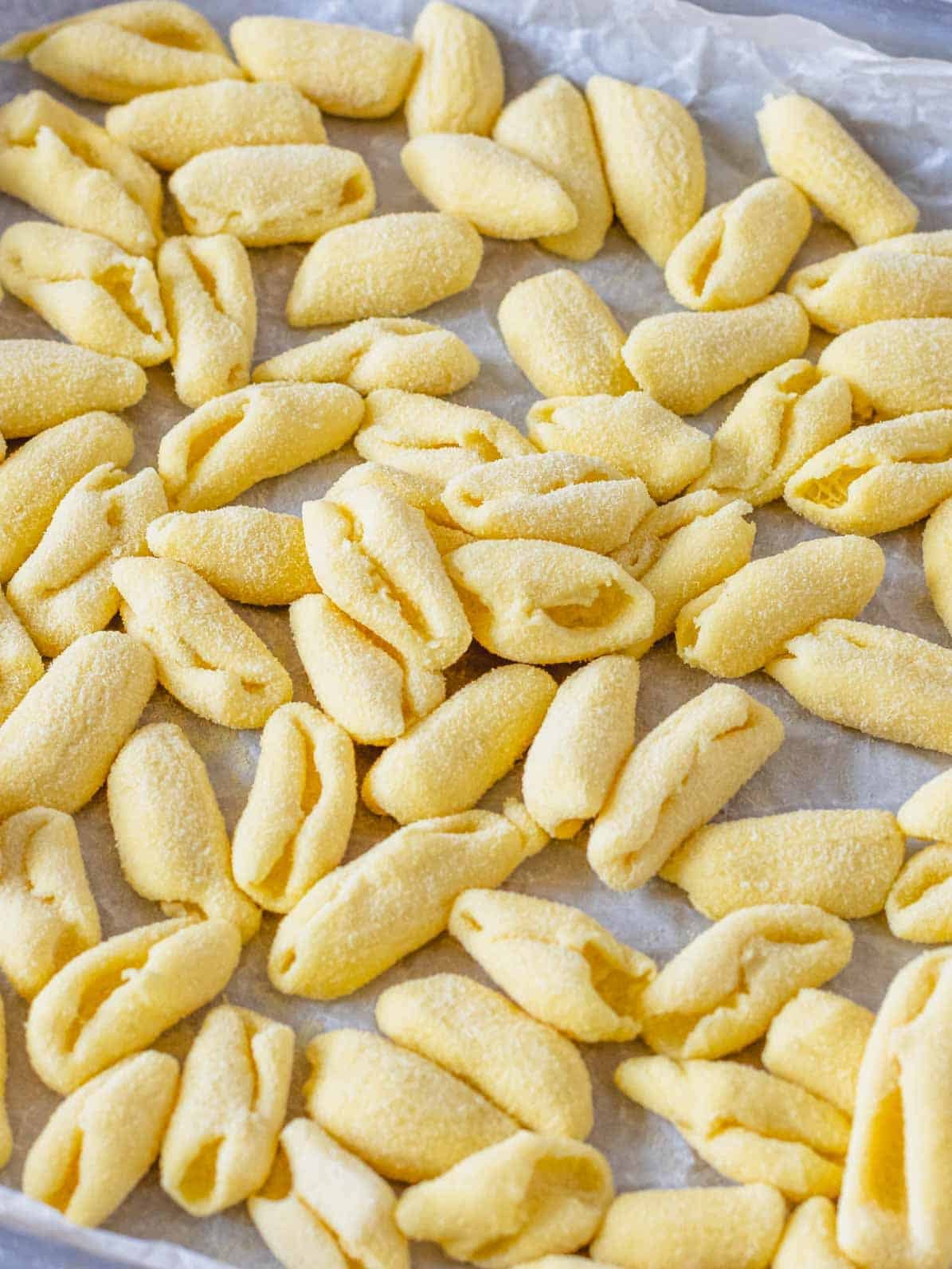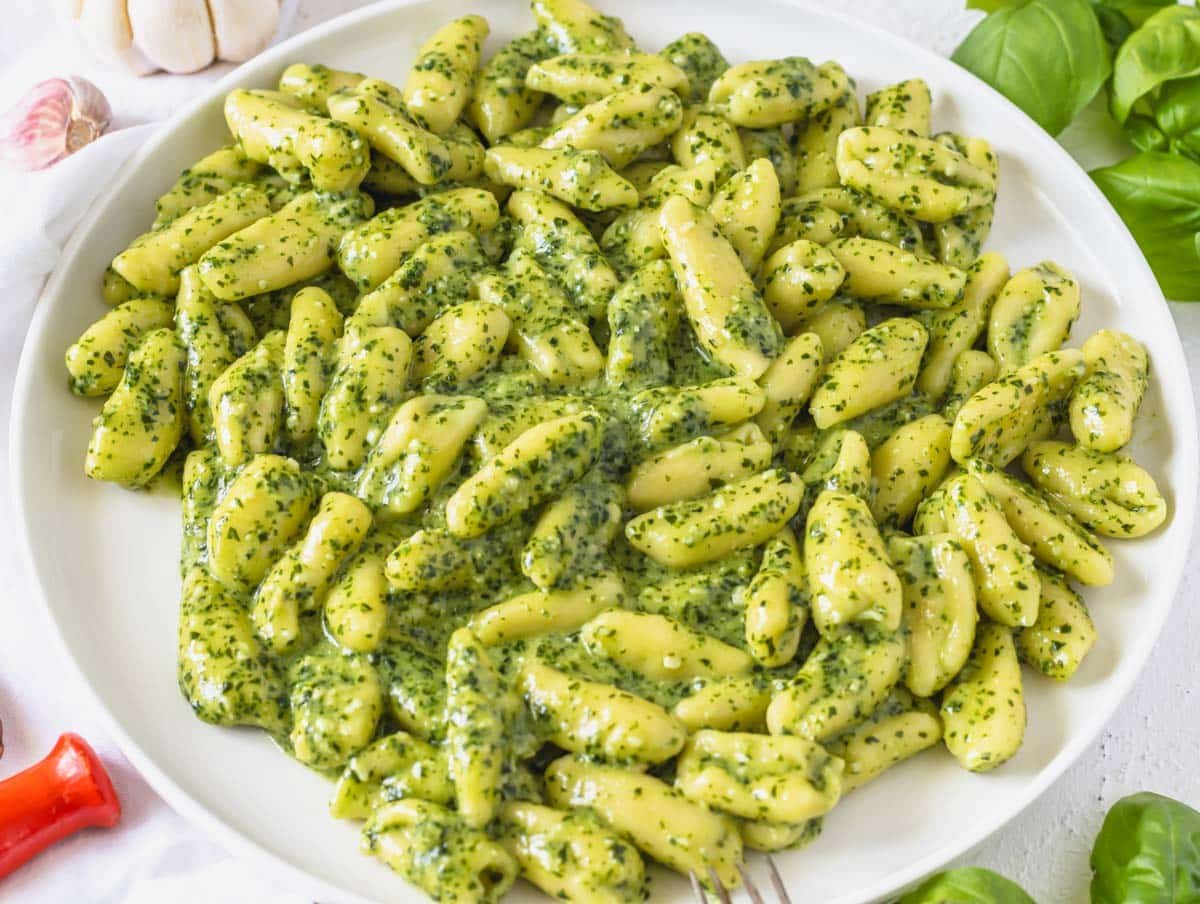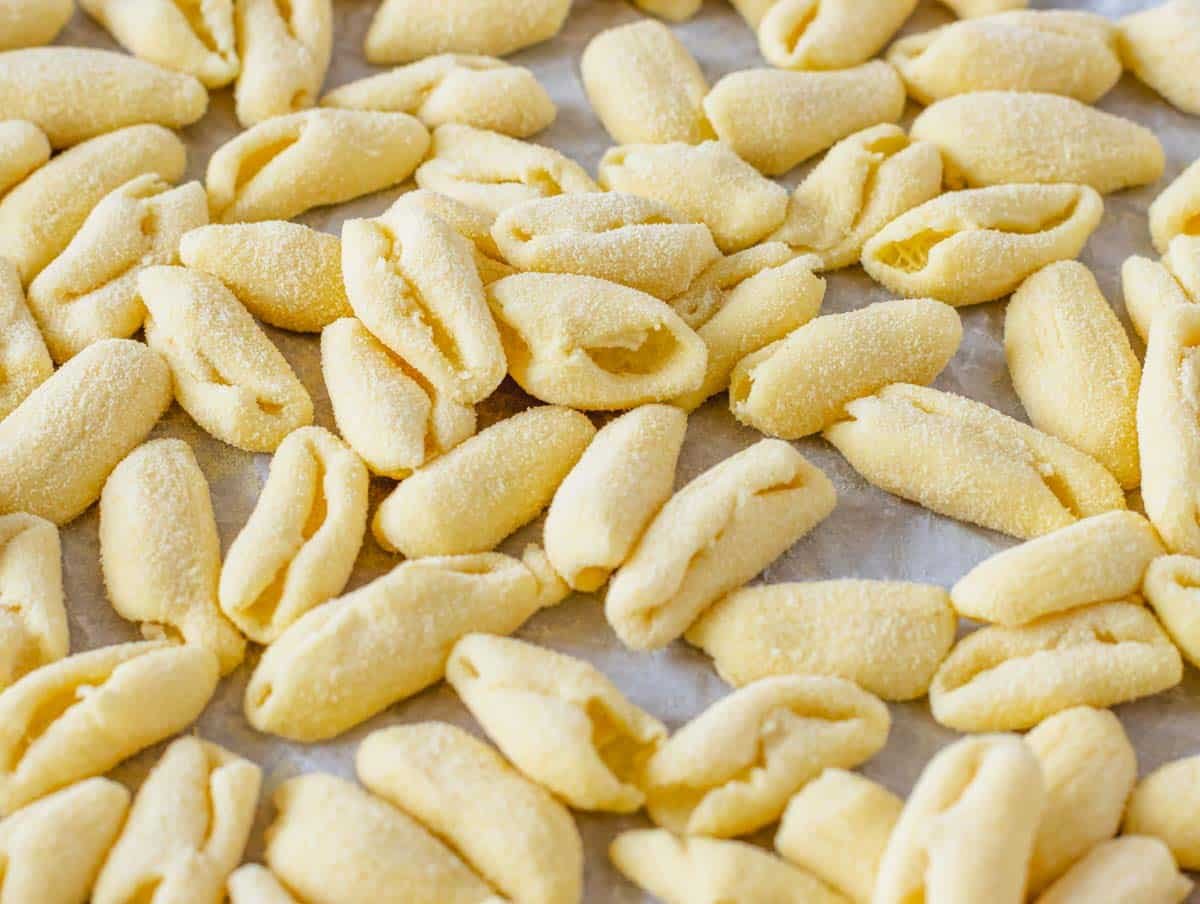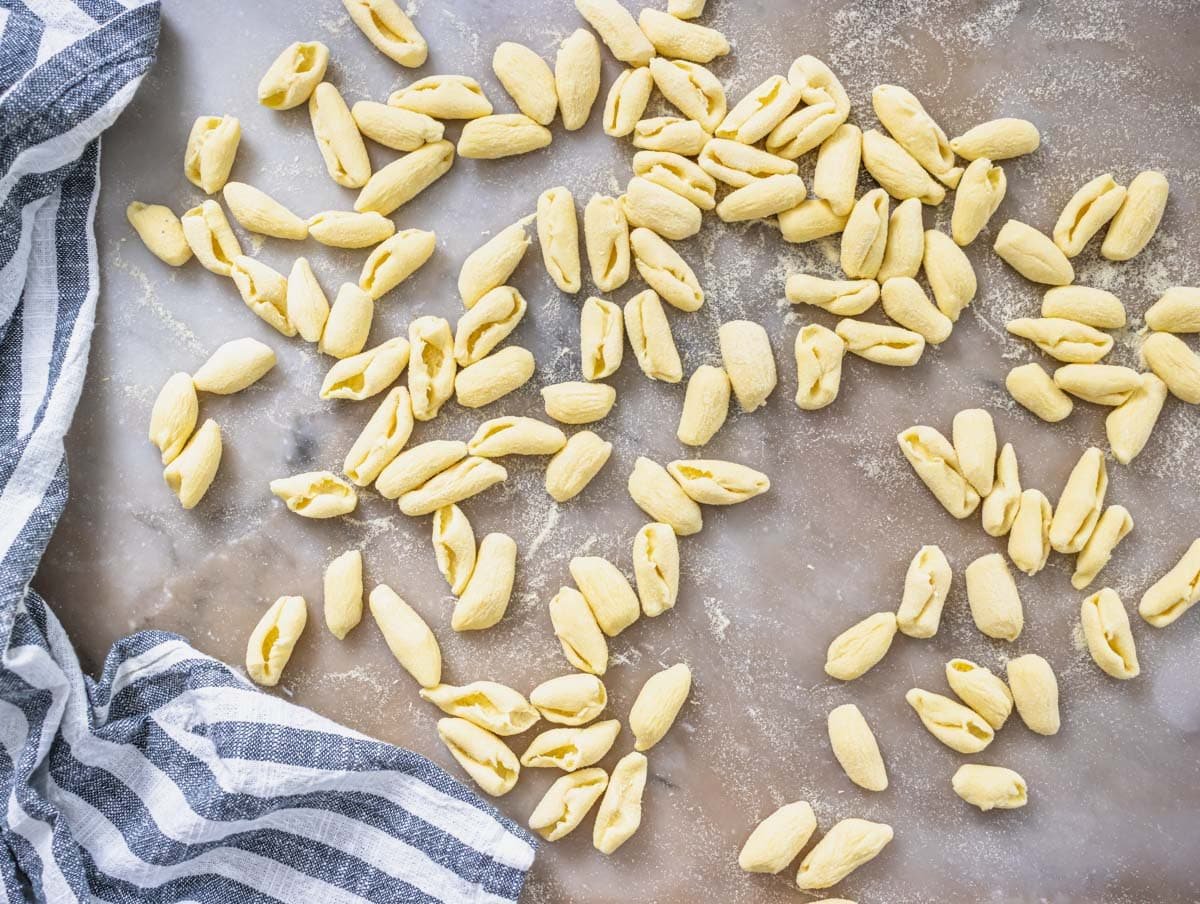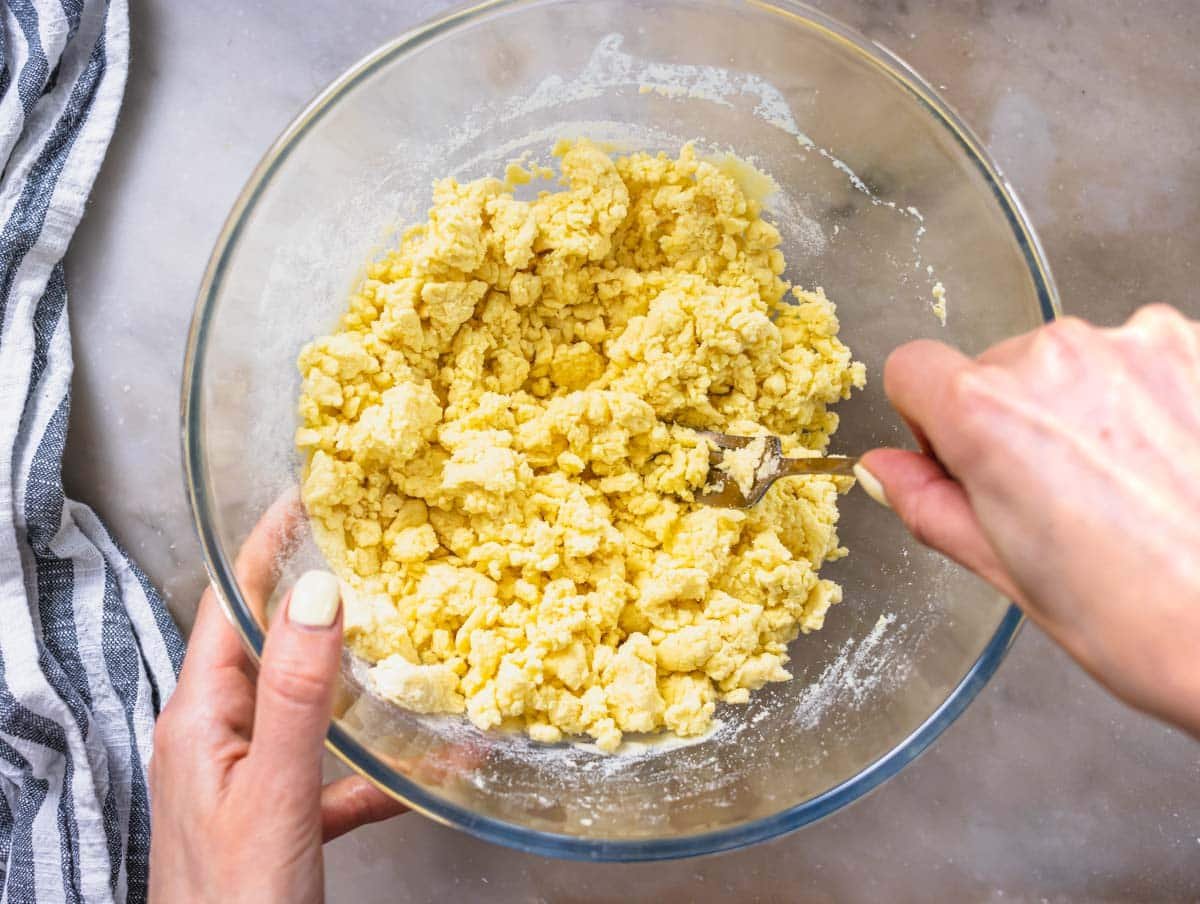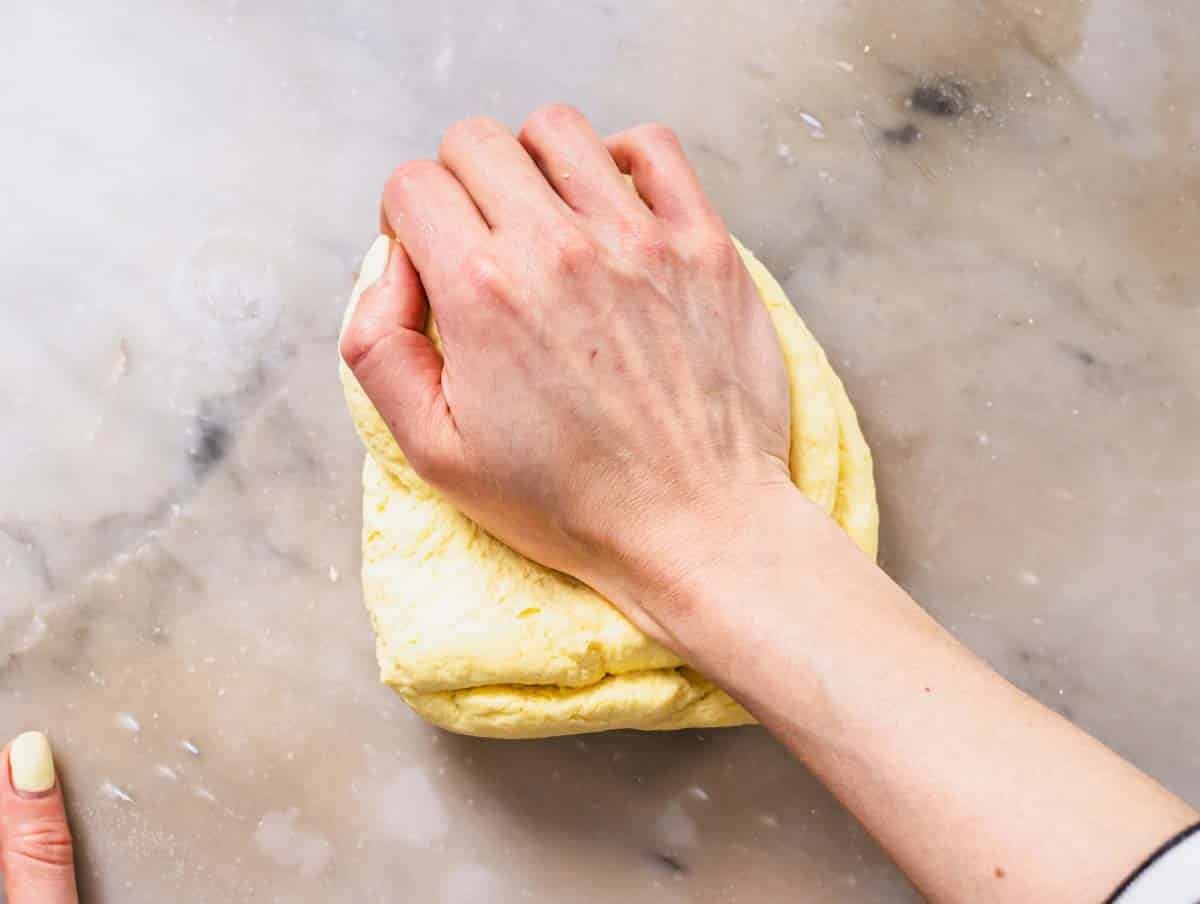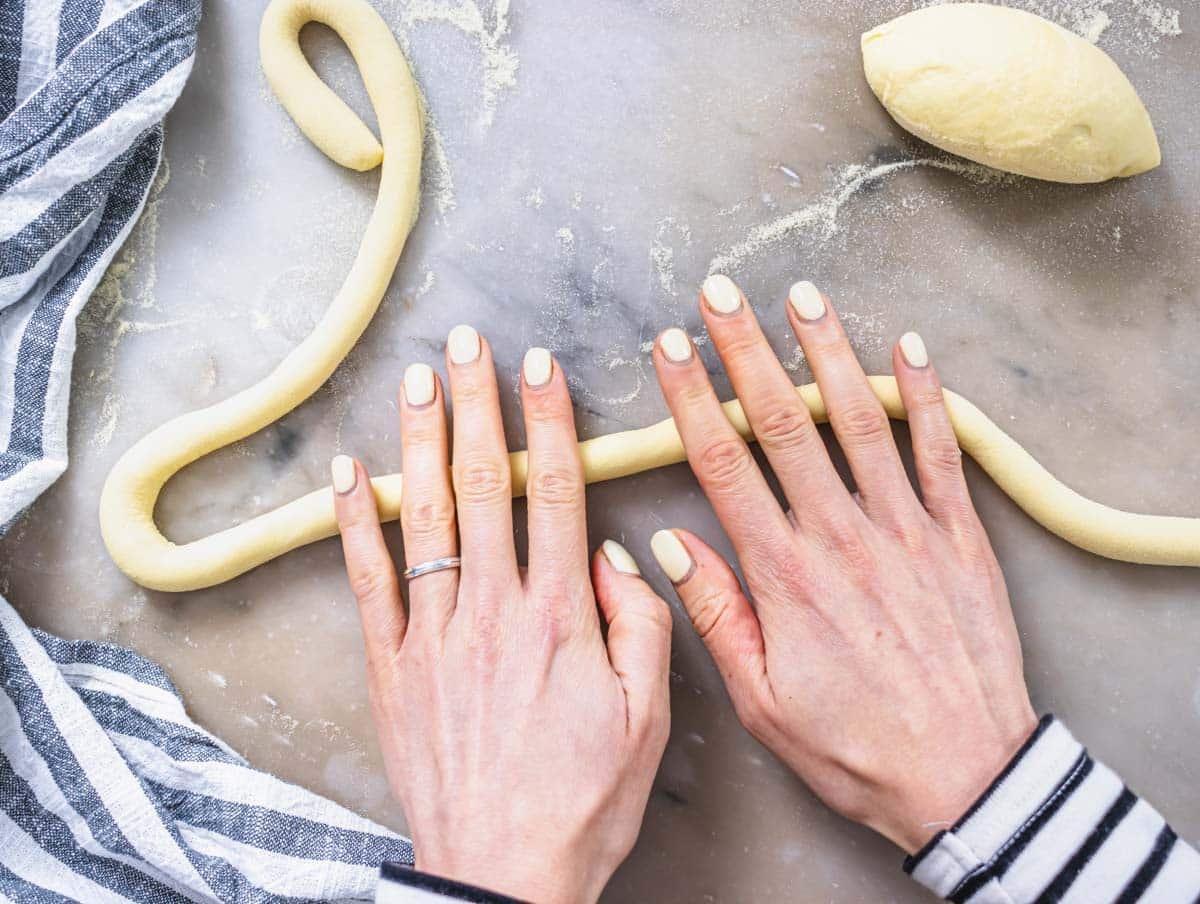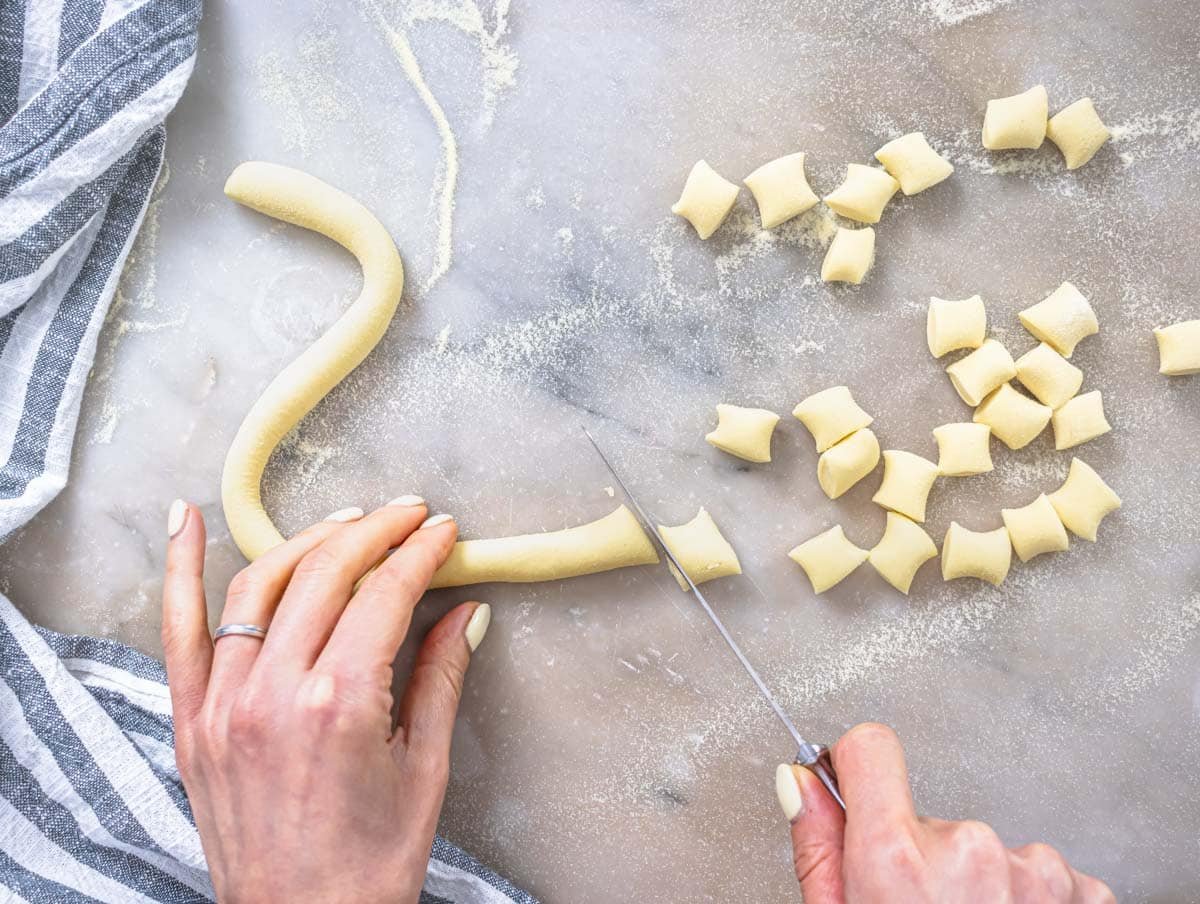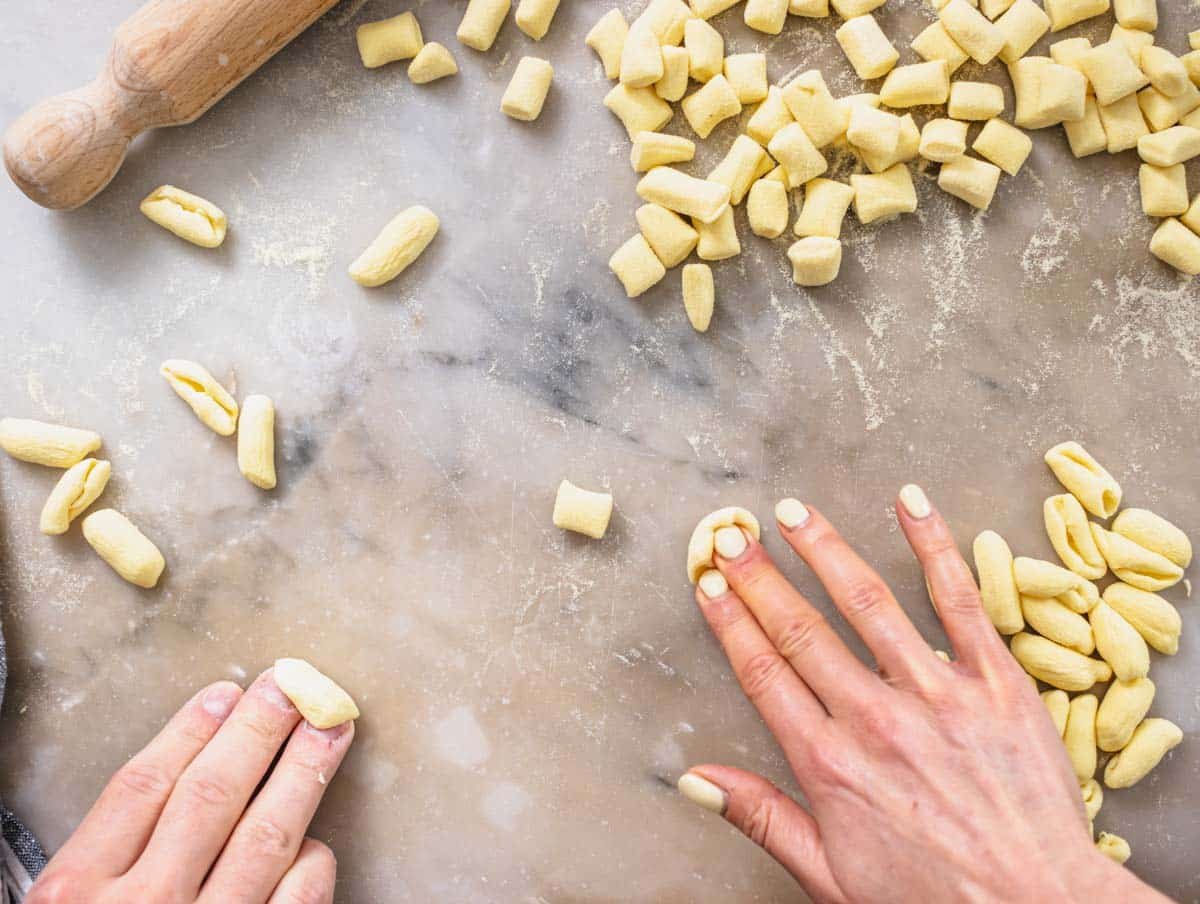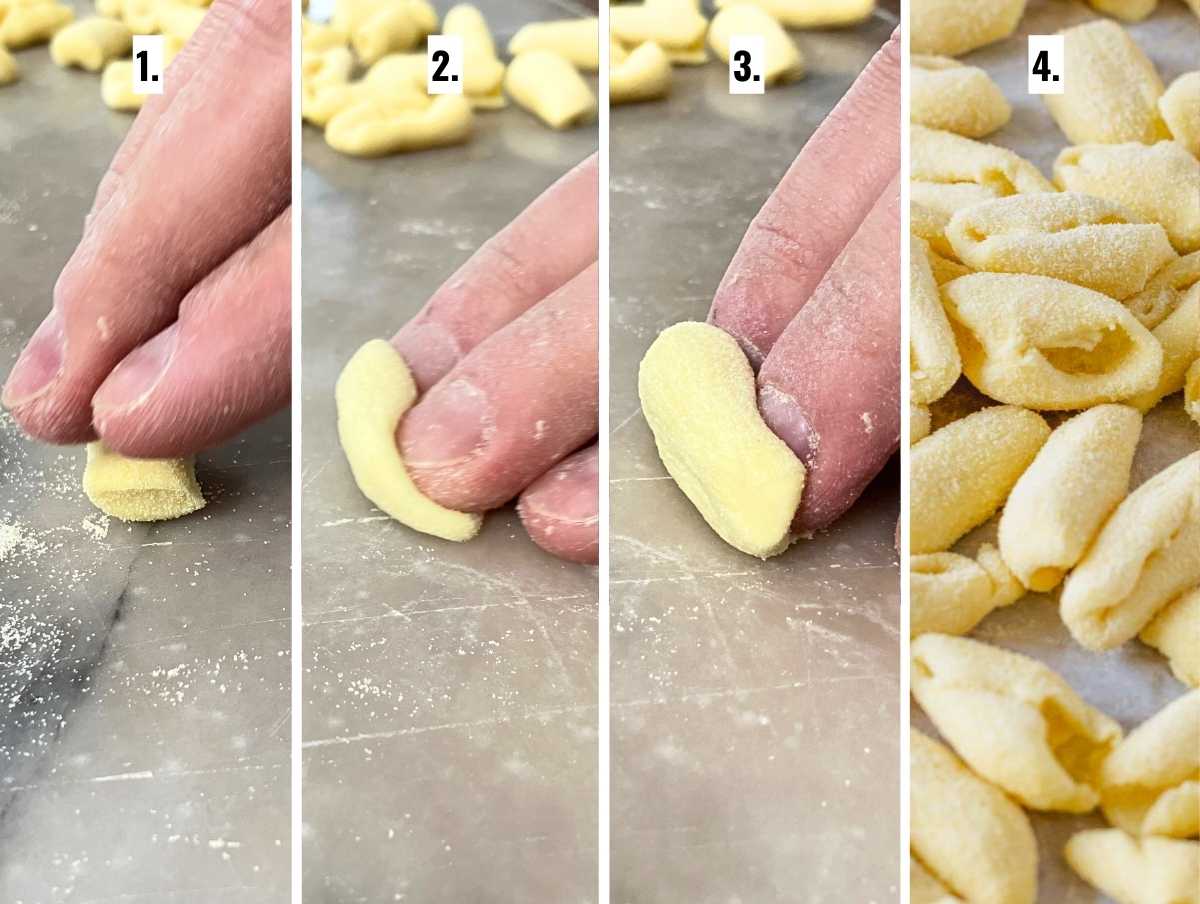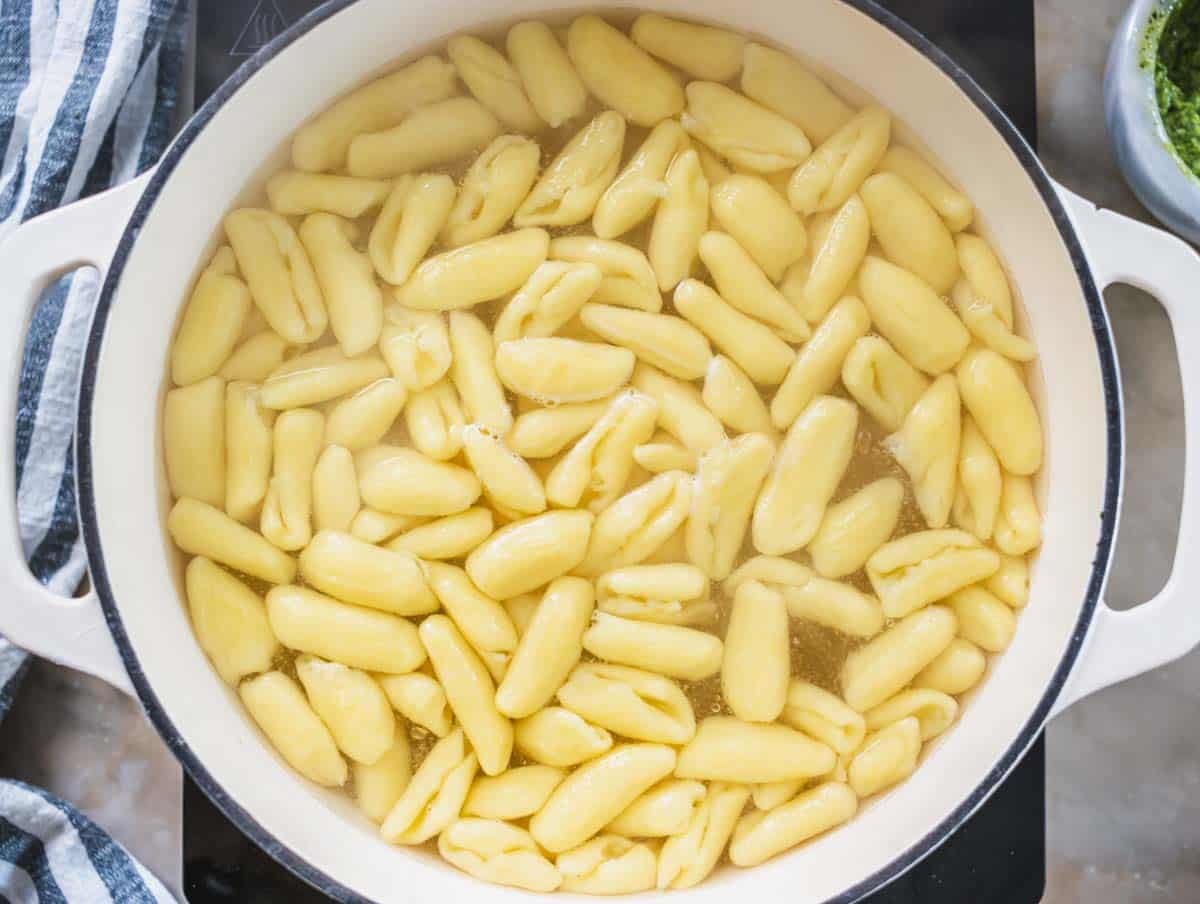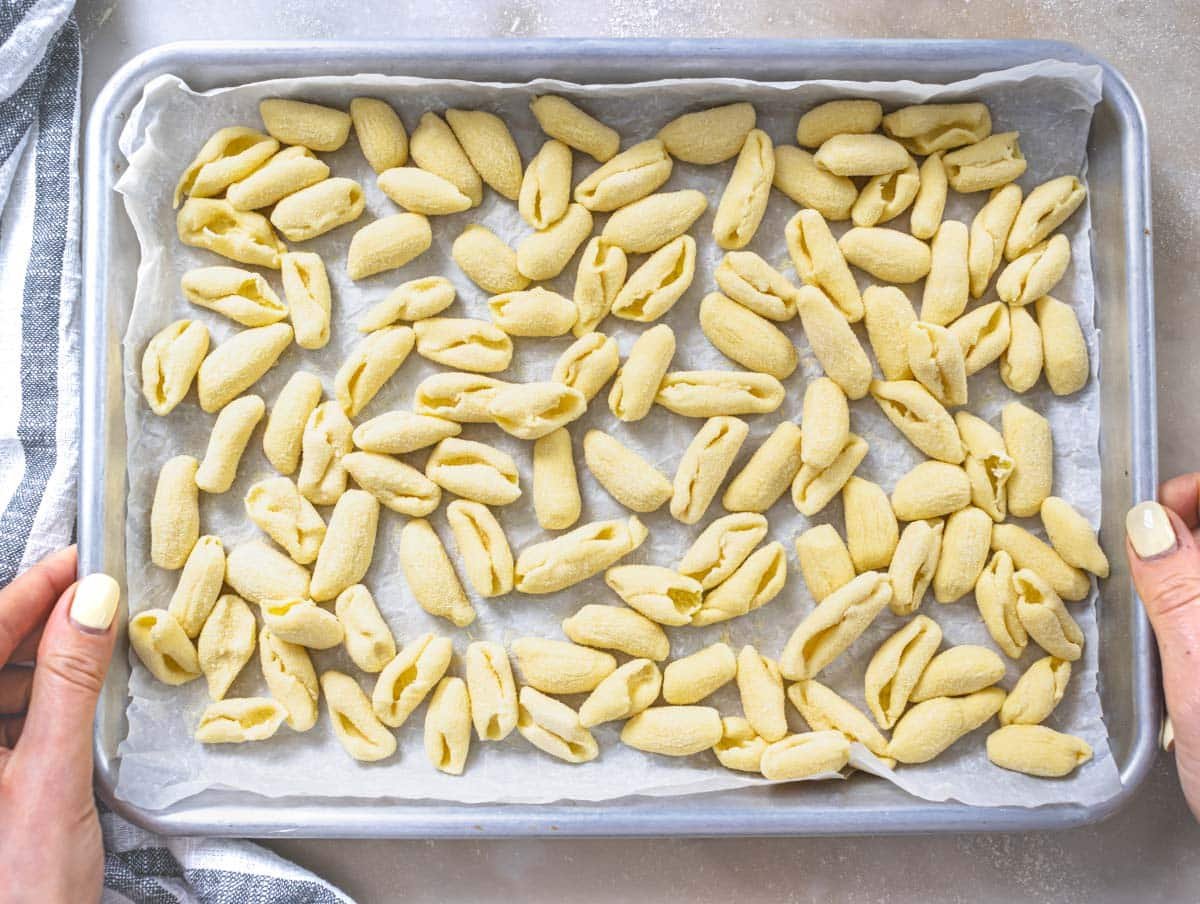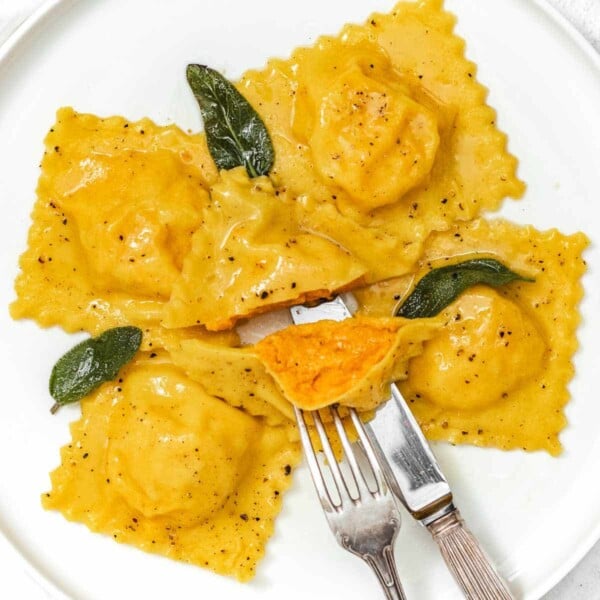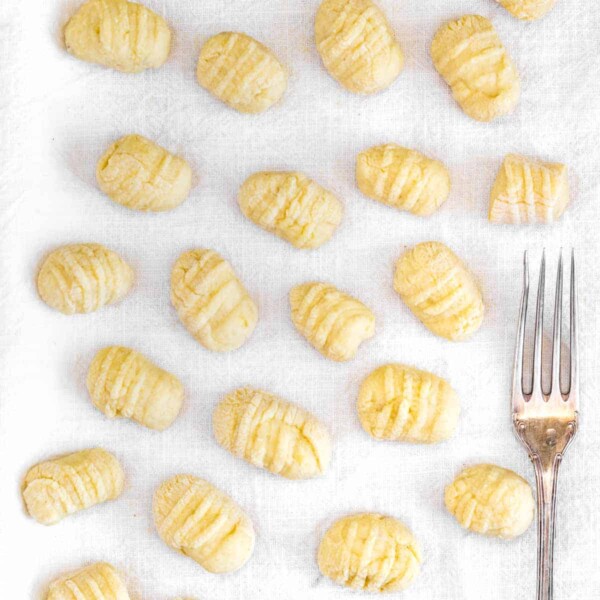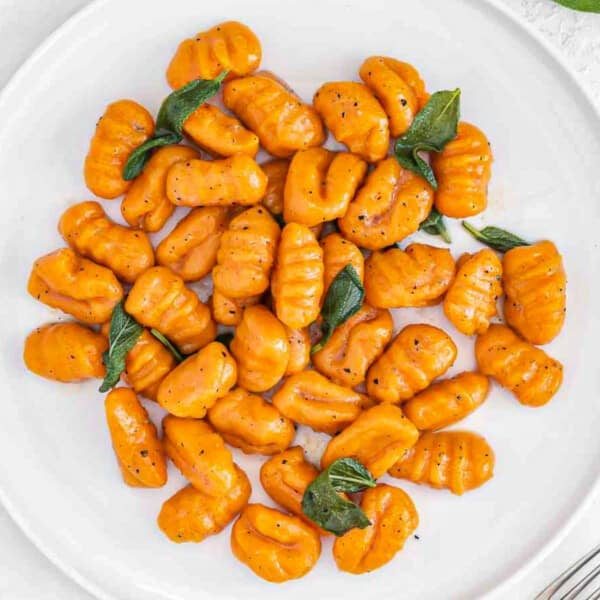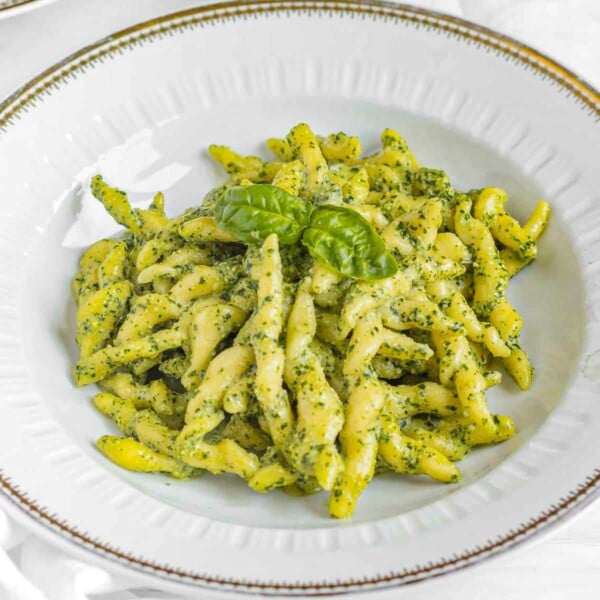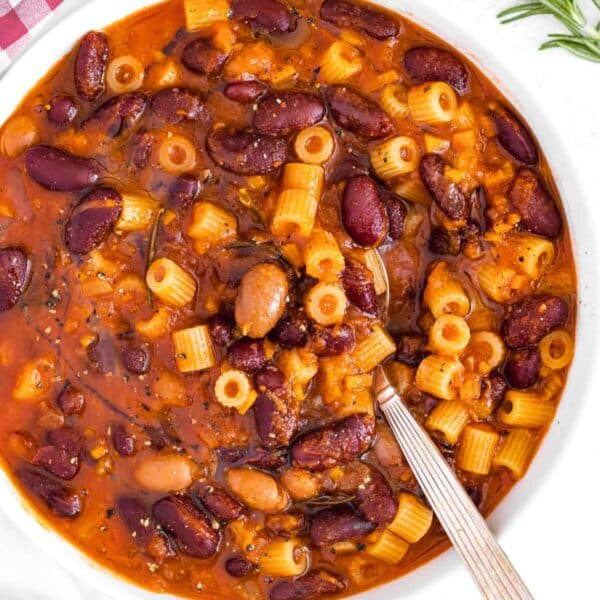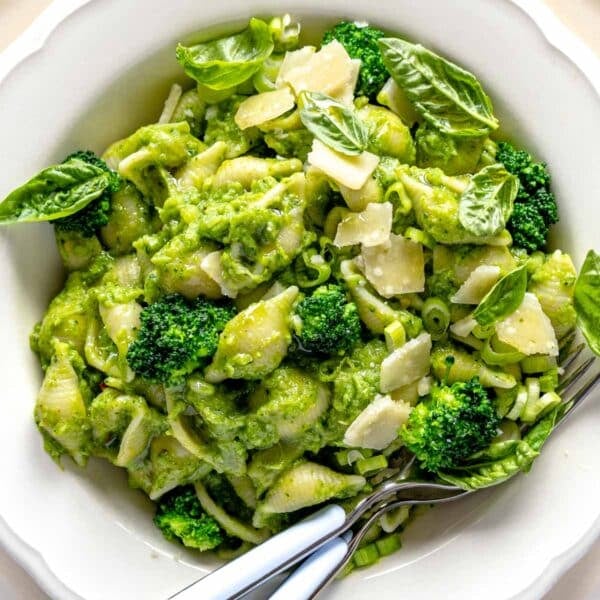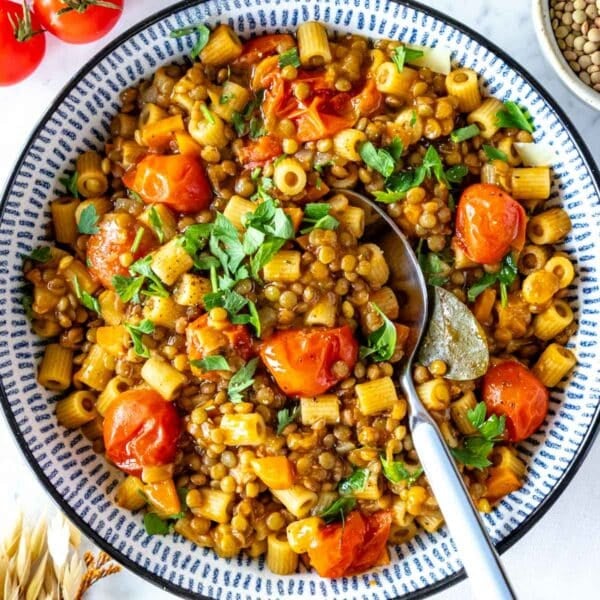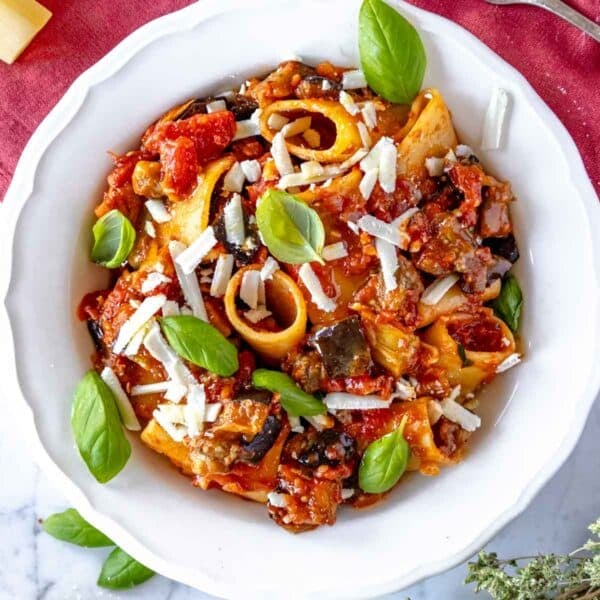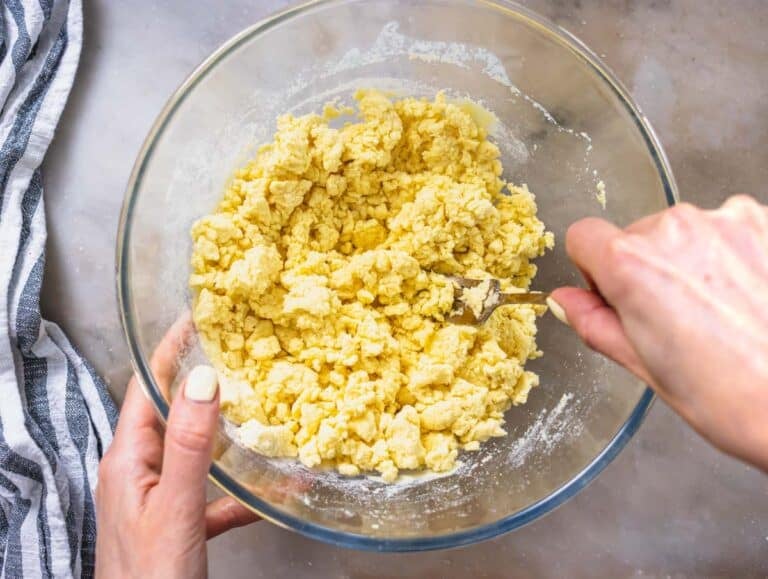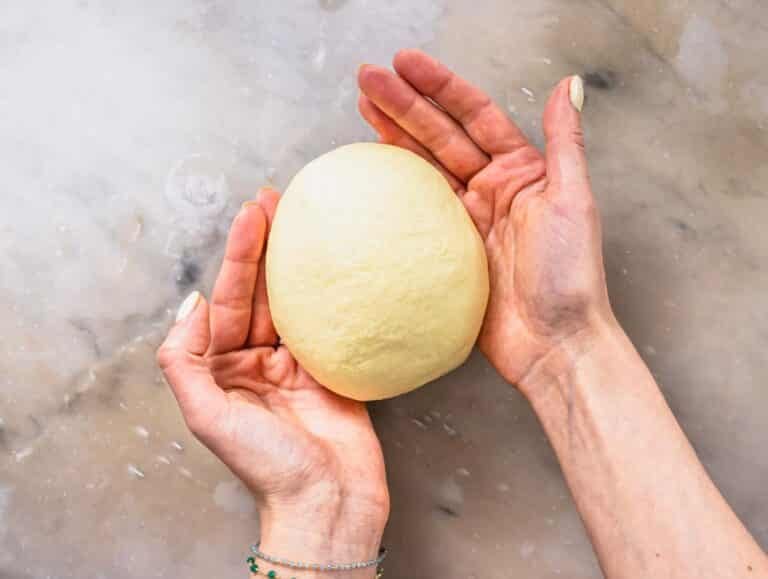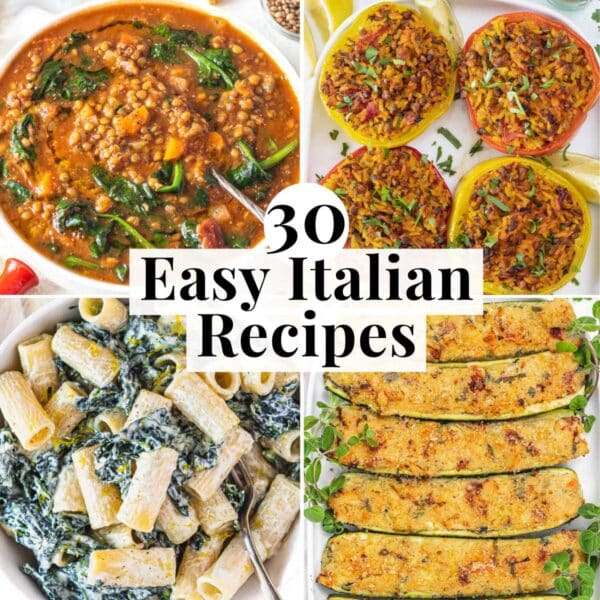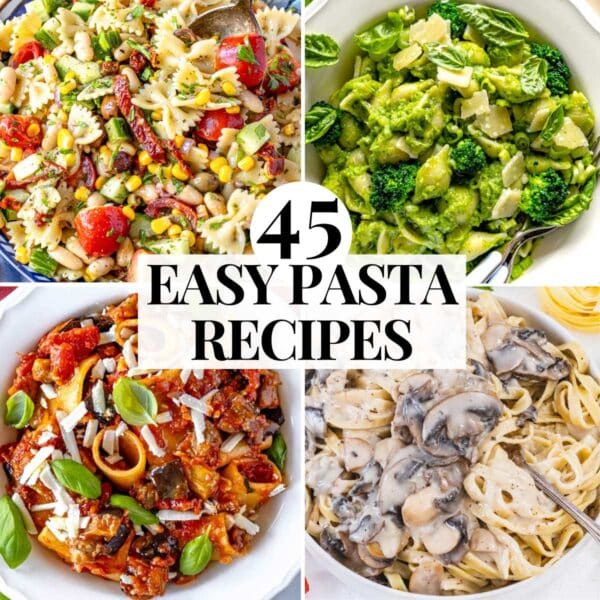Cavatelli is easy to make with two simple ingredients: durum wheat semolina flour and water. They are easy to shape with two fingers. They are delicious with most sauces, from homemade pesto to lentil ragù and mushroom sauce. Dietary Note: this recipe is suitable for a vegetarian and vegan diet.Don’t have time to read the full blog post? JUMP TO RECIPE HERE!
What is cavatelli pasta?
Ingredients and substitutions for cavatelli pasta
How to make cavatelli pasta
How to cook cavatelli?
Storage & Make ahead
More homemade pasta recipes
From there, they traveled through the south of Italy to Puglia, Abruzzo, Calabria, and Sicily. Now, cavatelli is available all over Italy and most parts of the world. Traditional homemade cavatelli is prepared by hand with two humble ingredients: water and durum wheat semolina flour. The pasta dough is the same you’d use to make homemade trofie and orecchiette. It doesn’t contain eggs, butter, or animal products, so it is suitable for a vegetarian and vegan diet. Cavatelli can be longer or shorter, depending on who makes them. In general, however, they are an inch to two-inch long, with a hollow center. The name comes from the word “cava,” meaning a hole. For me, growing up with my Italian nonna, spending countless afternoons kneading dough and shaping all kinds of gnocchi and pasta, homemade cavatelli is the ultimate comfort food.
Durum wheat semolina flour
Durum wheat semolina flour, or semola di grano duro in Italian, is essential when making cavatelli. It’s different from all-purpose flour as it’s coarser and preserves a more al-dente bite when cooked. You can find semolina flour in most supermarkets and online. If you can’t find durum wheat semolina flour, replace it with all-purpose flour. In this case, reduce the water by 1 – 2 tablespoons. Also, remember that the pasta will have a different bite and not be the authentic recipe.
Water
We recommend using warm water to better hydrate the flour.
Salt
We like to add just a pinch of sea salt.
Make the pasta dough
Add the durum wheat semolina flour, a pinch of salt, and water to a large mixing bowl and mix with a fork until all the water is absorbed. Transfer the flour-water mixture to a clean worktop and knead by hand for 5 to 10 minutes. The dough should be smooth on the surface, soft, and not sticky.
Shape the cavatelli
Cut the dough into four equal pieces. Start working with one piece and cover the other three pieces with a clean kitchen cloth to prevent them from drying out. Roll the dough into a long and thin snake-like shape. Cut the dough into small pillow-shaped pieces. Sprinkle with semolina flour to prevent the pieces from sticking to each other. With your index and middle finger, apply pressure while rolling down each piece of pasta. Here’s a slow motion of the process. The classic shape of cavatelli is that of small pasta shells with a hollow center. Drain and add to your favorite sauce.
Serving suggestions
Serve cavatelli with your favorite sauce. We recommend:
Basil pesto sauce or vegan pesto Arugula pesto Marinara sauce Arrabbiata sauce Cherry tomato sauce Lentil bolognese Broccoli pasta sauce Mushroom pasta sauce
How much salt and water are needed to cook cavatelli?
You’ll need a large pot of salted water as follows:
8 ounces of cavatelli (230 grams): cook pasta in 2 quarts of boiling water (8 cups or 2 Liters) with 1 tablespoon of salt (15 grams). Serves 2 – 3 people. 12 ounces of cavatelli (340 grams): cook pasta in 3 quarts of boiling water (12 cups or 3 Liters) with 1 ½ tablespoons of salt (21 grams). Serves 4 people. 1 pound of cavatelli (450 grams): cook pasta in 1 gallon of boiling water (16 cups or 4 Liters) with 2 tablespoons of salt (30 grams). Serves 5-6 people.
How much cavatelli pasta per person?
Since this is a fresh pasta with a higher content of water, you can serve a little more per person than dry pasta. We recommend around 100 to 120 grams (3.5 to 4 ounces) of homemade cavatelli per person. Refrigerator: Transfer the cavatelli to a baking tray lined with parchment paper. Arrange them on a single layer without overlapping. Cover with a clean kitchen cloth and store in the fridge for up to 36 hours. Freezer: Transfer the cavatelli to a baking tray lined with parchment paper. Make sure the tray fits in your freezer. Arrange the cavatelli on a single layer, then freeze for 2 hours. To save space in the freezer, you can transfer the frozen cavatelli to a freezer-friendly bag and put it back in for 3 months. Thaw: There’s no need to defrost the pasta. You can cook frozen cavatelli in salted boiling water from frozen.
Butternut Squash Ravioli
Gnocchi
Sweet Potato Gnocchi
Homemade Trofie with vegan basil pesto
Pasta e Fagioli
Broccoli Pasta
Lentil Pasta
Pasta alla Norma (Eggplant Pasta)
30 Easy Italian Recipes
45 Easy Pasta Recipes
45 Easy Vegetarian Dinner Recipes
30 High Protein Vegetarian Meals
